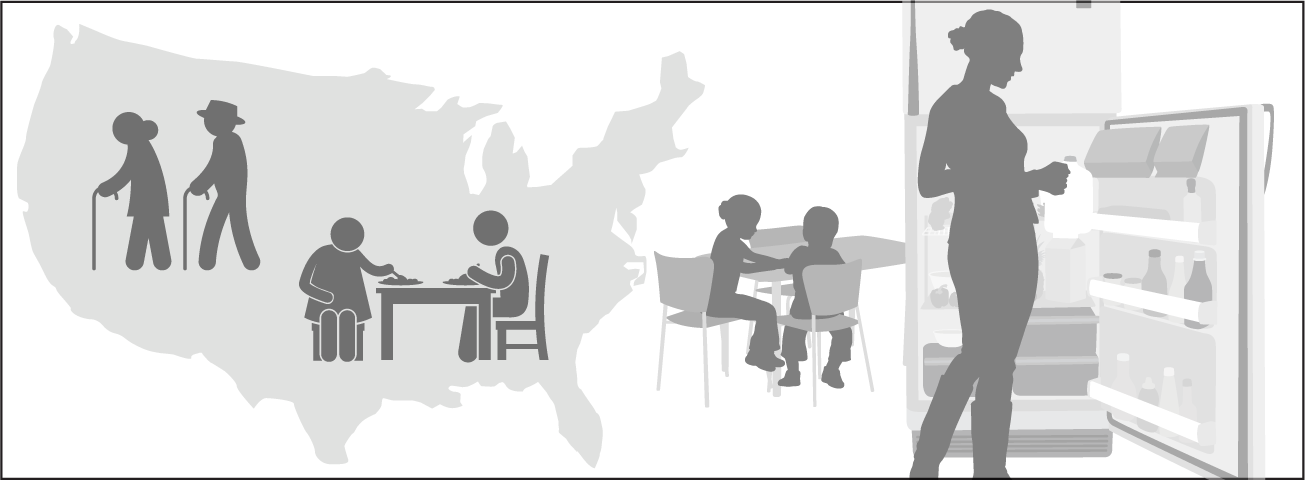
Food Insecurity Decreased for U.S. Households With Children in 2021, but Increased for Households Without Children
- by Laura J. Hales and Alisha Coleman-Jensen
- 11/7/2022
In 2021, 10.2 percent of U.S. households were food insecure, meaning they had difficulty providing enough food for all their members at times because of a lack of resources. Although the prevalence of food insecurity for all households was unchanged from 2020, some subgroups experienced statistically significant changes. For households with children, food insecurity declined in 2021 to 12.5 percent from 14.8 percent in 2020. Some subgroups of households with children showed declines as well, including households with children younger than 6 years old, married households with children, and households with children headed by a single female. Even so, the prevalence of food insecurity for households with children remained higher than for those with no children. For households with no children, food insecurity increased to 9.4 percent, up from 8.8 percent in 2020.
Households with no children accounted for two-thirds of food-insecure households in 2021, with single adults at the greatest risk. Among food-insecure households with no children, women living alone experienced the largest increase in food insecurity at 13.2 percent, up from 11.0 percent in 2020. In 2021, 12.3 percent of men living alone were food insecure compared with 11.4 percent in 2020. Food insecurity for households with women and men living alone in 2021 was more prevalent than the national average of 10.2 percent. In contrast, food insecurity for households with no children and more than one adult was below the national average at 6.9 percent.
Food insecurity for adults 65 years and older living alone rose to 9.5 percent in 2021, up from 8.3 percent in 2020. This means that nearly 1 in 10 elderly adults who live alone were food insecure at times during 2021. Also, very low food security among elderly adults living alone rose to 4.5 percent in 2021, up from 3.4 percent in 2020. That population subgroup was the only one to see an increase in very low food security, a more severe form of food insecurity in which eating patterns are disrupted and food intake is reduced. Food insecurity for all households with elderly adults in 2021 was at 7.1 percent, below the national average.
Food insecurity may have improved for households with children in 2021 because of the expansion of Federal nutrition assistance programs and other forms of assistance targeting households with children, such as the expanded Child Tax Credit or Pandemic Electronic Benefits Transfer (P-EBT) program. Future research could address existing knowledge gaps related to how family composition, age of household members, nutrition assistance, and other dynamics have affected recent trends in food insecurity.
This article is drawn from:
- Coleman-Jensen, A., Rabbitt, M.P., Gregory, C.A. & Singh, A. (2022). Household Food Security in the United States in 2021. U.S. Department of Agriculture, Economic Research Service. ERR-309.
You may also like:
- Hales, L.J. & Coleman-Jensen, A. (2022, February 7). Food Insecurity for Households With Children Rose in 2020, Disrupting Decade-long Decline. Amber Waves, U.S. Department of Agriculture, Economic Research Service.
- Jones, J.W., Toossi, S. & Hodges, L. (2022). The Food and Nutrition Assistance Landscape: Fiscal Year 2021 Annual Report. U.S. Department of Agriculture, Economic Research Service. EIB-237.
- Coleman-Jensen, A., Rabbitt, M.P., Gregory, C.A. & Singh, A. (2021). Household Food Security in the United States in 2020. U.S. Department of Agriculture, Economic Research Service. ERR-298.
We’d welcome your feedback!
Would you be willing to answer a few quick questions about your experience?


